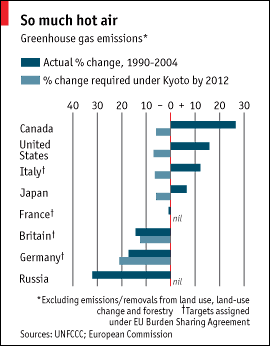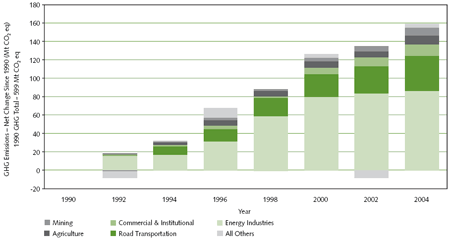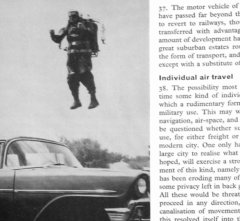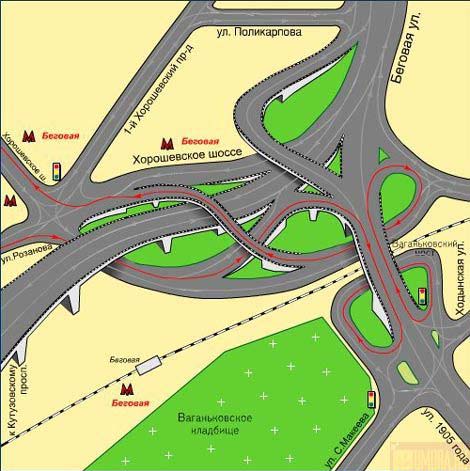At last weekend’s conference for the Canadian Regional Science Association, I presented a paper on Understanding Iterative Proportional Fitting Using Log-Linear Models. At day’s end, I received the Best Student Paper award (in a tie with Marianne Hatzopolous, a Ph.D. student in my lab). Sure, it’s just a small regional conference… but I’m still happy with that outcome.
In other news, we had an interesting tour of Mississauga with former geography professor Gunter Gad. Some of my photos are on Flickr. I’ve visited Mississauga twice on bike in the past year, both times hitting up Port Credit on the waterfront and Square One, the nominal city centre. This conference was at U of T’s Mississauga campus, and I used a combination of GO Transit and cycling to attend. After seeing a broader spectrum of the streets, I’m considerably more pessimistic about the potential for change in travel behaviour or urban form in this city. It’s extremely segregated into residential and non-residential areas, and the pedestrian realm on almost all arterials is utterly bleak. Not bleak in the sense that it’s dangerous or dirty – just extremely monotonous. Given a choice, no one would walk a kilometer along a street like this – and I saw many streets in exactly this style.
Andy Barrie on Toronto
Andy Barrie (the CBC morning host, for the non-Torontonians in the crowd) gave a speech recently urging a more walkable Toronto, with better public spaces. A lot of it is familiar stuff for the pro-pedestrian crowd, but still encouraging to hear from a figure like Barrie. What I liked best, though, were his comparisons of Toronto and Montreal:
“After moving to Toronto in 1977, one of first things I noticed just walking around was that people didn’t meet your eye. Everybody I know comments on this. Nancy White, the singer/songwriter, calls Toronto the ‘city of the averted eye.’ People here just don’t look at you. In Montreal, when I first got there, I used to think that every single woman I saw in the street was coming on to me. Eye contact is a given there.
“Something I realized very soon after coming here,” elaborated Barrie, “was that Toronto was a city of strivers. The place is made up of people who wanted more than wherever they came from could offer so they went looking for a bigger arena, a better sandbox. They were very, very work oriented.
“After I had moved here a friend from Montreal asked me what it was like and I said that Toronto was like a woman you marry for her money. Montreal was like a woman everybody told you to get rid of because she’d eat you alive and yet you couldn’t pull yourself away.
Is it still accurate? Somewhat. True enough to be recognisable, and certainly matching some of my impressions when I landed back here one year ago.
Negawatts
I hope you don’t mind my descent into technobabble for a few moments.
The Toronto Star recently published an interesting article on demand management in the electricity sector in Ontario.
I go back to a speech that Paul Murphy, CEO of the Independent Electricity System Operator, gave back in January. He pointed out that of the 8,760 hours in all of 2006, peak electricity demand in the province only surpassed 25,000 megawatts for 32 hours. At its highest, it reached 27,005 megawatts last Aug. 1.
So we have two options: spend billions of dollars building and operating natural gas plants that can give us an extra 2,000 megawatts 32 hours of the year, or spend considerably less to pay companies that have promised to reduce their electricity consumption by 2,000 megawatts for those same 32 hours of the year.
Already, the government is paying organisations to reduce their demand momentarily during peak crunches. Loblaw grocery stores are cited as an example, and there are apparently aggregator companies that collect together users to create brief demand reductions during peak periods, in return for a payment.
This is not the conventional approach to either supply or demand management. Economists will argue that demand management is best achieved through price increases, not convoluted rebate schemes like the one discussed by this article. If prices fluctuate in response to changes in supply/demand and consumers can easily observe the price they will pay, then high prices during peak periods will automatically discourage consumers (like Loblaws) who don’t really need the power that badly. (Of course, a badly designed/regulated market can lead to manipulations – as California found out when Enron and others took advantage of flaws in its power market.)
That said, the rebate scheme seems to create a sort of two-tier pricing scheme: those who can reduce demand during peak periods effectively get a discount on their annual electricity consumption. Provided that the aggregator schemes allow anyone to join, then anyone can choose to receive the lower rate. Of course, the system may not be as flexible as variable prices, since aggregators probably sign long-term contracts with businesses/residents who are willing to reduce usage – so there’s no room to change your mind on a day-to-day basis. Mind you, given the catastrophic nature of a power grid overload, a bit of advance planning is reasonable. Overall, it’s probably still quite a bit less efficient than proper pricing, and I imagine it’s also susceptible to manipulation, but the idea is somewhat intriguing.
I find this interesting because peaked demand patterns are a central issue in many systems, including the transportation system. Like the power plants, we build our roads to serve peak demand, and are often left with large amounts of unused space during the off-peak. Is there a place, then, for this type of demand management in the transportation world? Suppose a municipal government faced two options: expanding a freeway (for several billion dollars), or reducing demand. Given the discretionary nature of many peak period trips – and particularly the discretionary nature of peak period mode choice – there is substantial potential for demand reduction.
Unfortunately, there is a key difference between the electricity system and the road system: monitoring. If a consumer signs a contract to reduce power consumption, an outside agent can observe the consumer’s home/office and ensure that power consumption was reduced during the peak period. The same does not apply for driving: if a comparable contract was signed to guarantee that a traveller did not drive during the peak period, there is no reasonable way for an outside agent to observe a person and ensure that s/he complied. The only mechanism that exists for ensuring compliance is removal of the driver’s license, which is far too blunt – it prevents off-peak driving completely.
In some ways, we treat the transit system as a sort of demand aggregator – we charge transit with attracting people off the roadways, and justify subsidies to transit on the basis of relieving peak demand on the roads (in addition to its many other roles, such as citybuilding or providing access to those unable to drive). And while it can have that effect, the connection between subsidising transit and reducing peak roadway demand can be somewhat indirect. The subsidy’s effect (improved transit service and lower fares) do influence travellers’ decisions, naturally, but those improvements can be indirect and fluctuate over time.
If there was a more subtle instrument – an “off-peak only” driver’s license, for example – then society could direct subsidies to individuals who choose to forego the right to drive at peak period, and potentially forego costly expansion of the road system. While this subsidy might sound like it would be expensive, it could be introduced simply as a price differential – a high price to obtain a “peak” driver’s license, and a low price to obtain an “off-peak” license.
For the moment, we have vehicle registration fees, which are a little more blunt as a policy instrument since they penalise all driving rather than simply charging for peak-period driving. Of course, given that society incurs a cost to provide infrastructure for off-peak driving, it is fair to charge some fee to all drivers – but the overbuilding of our roadways is probably more closely linked to peak period demand than off-peak demand.
There is already one extremely sensitive policy instrument: fluctuating parking fees, which have the advantage of adjusting according to local conditions, and varying throughout the day. However, the influence of parking fees can be reduced by other factors, such as bundling with housing or office space, subsidy by employers, and oversupply through municipal regulations.
At any rate, this is all just a brief thought experiment on my part, with no real research involved. I’ve never heard of any proposals for “off-peak licenses” before, but perhaps they warrant consideration.
Canada in last place

I was startled to see the figure on the right in a recent Economist article. Canada is not only going in the wrong direction when it comes to reducing greenhouse gas emissions, it’s actually doing worse than the rest of the G8, including the United States.
One interesting aspect of Kyoto is that it isn’t indexed to population growth, so countries that accept large number of immigrants (e.g., Canada) are penalised relative to nations that have limited population growth (e.g., western Europe). Ultimately, I suspect this makes sense: the immigrants that Canada accepts are largely from low-carbon nations, and are likely to adopt high-carbon lifestyles upon arrival, so migration is not simply a redistribution of existing emissions. Nevertheless, it does leave Canada at a further disadvantage. Mind you, as the Economist figure shows, the European nations are striving for higher targets than Kyoto anyways – their internal burden-sharing agreement allocates more reduction burden onto high-emission nations.

Looking a little closer (with a little help from an Environment Canada report), we can see the breakdown of the growth in the figure above. I’d like to see this in a little more detail, breaking down energy and transportation a little more finely. Canada’s GHG emissions grew by 26.5% from 1990-2004 (from 599MT to 758MT), and I’ve expressed the 1990-2004 GHG increases in each category as a percentage of 599MT, to show how each sector contributes to the 26.5% growth.
- 8.5%: fossil fuel industries, pipelines and “fugitive sources” (coal, oil, natural gas)
- 7.8%: road and off-road transportation
- 5.8%: electricity generation
- 2.0%: commercial/institutional
- 1.7%: agriculture
- 1.5%: mining
- 0.3%: domestic marine transportation
- 0.2%: domestic aviation
- 0.2%: industrial processes
- -0.2%: rail
- -1.3%: other
- 26.5%: total
This puts in context some of the recent politicking about GHGs. Yes, the fossil fuel industries are a large part of the problem: the oilsands are a major source of carbon emissions, and the growth of exports in Alberta is clearly a big part of our emissions (8.5/26.5 = 32% of growth in GHGs). But, road/off-road transportation (29% of growth) and electricity (22% of growth) have also contributed significantly to our recent increases in emissions.
Breaking down the 7.8% from road and off-road transportation further:
- 3.6%: heavy-duty trucks (gasoline & diesel)
- 2.9%: cars and light-duty trucks (gasoline, diesel, propane and natural gas)
- 1.5%: off-road transportation (construction, agriculture, snowmobiles, ATVs)
- 7.8%: total
Heavy-duty trucks are a significant part of road transportation growth. Keep in mind that this is part of other changes in the freight industry, including a 0.3% increase in marine emissions and a 0.2% decrease in rail emissions, giving a 3.7% net increase for freight. The switch from cars to SUVs, the ongoing decline of transit usage, and the ongoing rise in kilometres travelled per person contributed to the 2.9% contribution by cars and light-duty trucks. Off-road usage is a bit weird, and I haven’t looked into how they measure this distinction.
Now I have a sense of how my new field fits into the bigger GHG picture: passenger transport makes up over 10% of Canada’s growth in GHG emissions. Stopping that growth is clearly an important start towards stabilizing national (and global) emissions, but that’s just the beginning – the latest negotiations are talking about a 50% reduction in global emissions relative to 1990. If developing countries are allowed to increase their per capita emissions, Canada would need something closer to a 75-80% reduction in emissions for a net 50% reduction globally.
Phew. I’m sure that’ll be a cinch.
Upgrade
In an effort to fight comment spam, I’ve upgraded the website from WordPress 1.5 to WordPress 2.2. I’ve disabled some of my older ineffective antispam plugins, and I’ve switched to Akismet instead. As a bonus, I can start using some of the newer plugins like the movie reviews thing that Eric uses.
Let me know if you have any problems.
Annotated Readings
Almost all of these readings are old, dating back to my initial forays into understanding transportation. They’re listed in the order I read them, from newest to oldest. Most of the content is just quotations I found interesting, with a few comments. Many of the comments no longer reflect my current thinking; take it with a big grain of salt. If you’re an author of one of these publications and object to the (admittedly extensive) quotations I’ve included here, please let me know.
- Stephen Goddard. Getting There: The Epic Struggle between Road and Rail in the American Century, 1994.
- Robert Cervero. The Transit Metropolis: A Global Inquiry, 1998.
- Hugh McClintock. Planning for Cycling: Principles, Practice and Solutions for Urban Planners, 2002.
- Peter Newman and Jeffrey Kenworthy. Sustainability and Cities, 1999.
- Boris Pushkarev and Jeffrey Zupan. Public Transportation and Land Use Policy, 1977.
- John Punter. The Vancouver Achievement: Urban Planning and Design, 2003.
- Peter Newman and Jeffrey Kenworthy. The Land Use-Transport Connection, 1996.
- Anthony Downs. Stuck in Traffic: Coping with Peak-Hour Traffic Congestion, 1992. (Also includes Still Stuck in Traffic.)
- John Roberts. Quality Streets: How Traditional Urban Centres Benefit from Traffic Calming, 1989.
- Jane Jacobs. The Nature of Economies, 2000.
- Jane Jacobs. Cities and the Wealth of Nations, 1984.
- Eric Miller, David Kriger and John Hunt. Integrated Urban Models for Simulation of Transit and Land Use Policies, 1998.
- Mike Davis. Dead Cities, 2002.
- Fotheringham and Wegener. Spatial Models and GIS, 2000.
- Mark Garrett and Martin Wachs. Transportation Planning on Trial, 1996.
- Jane Jacobs. The Death and Life of Great American Cities, 1961.
- Paul Moore and Terry Thorsnes. The Transportation/Land Use Connection, 1994.
Jetpacks & garden privacy

I just finished a term paper on “corridors in the polycentric city,” looking at various bodies of literature and their ideas for the urban form in transit corridors linking nodes in a city. Along the way, I read Stephen Marshall’s excellent Streets & Patterns, a well thought-out analysis of road hierarchies and the subtle auto-oriented biases they introduce. Marshall talked at great length about the Buchanan report (Traffic in Towns), a British government report from 1963.
The Buchanan report is an interesting beast. On the one hand, it documented all sorts of ills associated with the automobile in that era: parking everywhere, pedestrian injuries, derelict cars rusting in the middle of the city. On the other hand, the solution it proposed was to give the major street network over to cars entirely, labelling the main network “distributors.” It drew an analogy to a hospital: the rooms of the hospital (neighbourhoods bounded by distributors) are quiet, peaceful places; the corridors of the hospital are filled with food carts, stretchers and people moving everywhere. On the basis of this simplistic analogy, they recommended a similar treatment for cities. Is a city like a hospital, really? Should it be? Those questions went unasked. They also recommended rebuilding many major London streets with a pedestrian superstructure – rebuilding the outdoor pedestrian cafe experience one floor up on a system of walkways above the street. I’m glad that never happened.
The report was well aware of the coming storm: at the time of its writing, the majority of Britons did not yet own cars, but it was clear that the nation had but a few years left. Once the majority owned cars, it was clearly going to be difficult for a democratic government to limit their use.
But in its most entertaining content, the Buchanan report treats some very 1950s sci-fi ideas seriously, like personal jet propulsion:
The motor vehicle has been eroding most of the common amenities of life, but there is still some privacy left in back gardens, verandahs, bedrooms and on roof-tops. All these would be threatened if people could take off vertically at will.
Garden privacy is under threat!
The Science Commons
I’ve been writing a short report on open source transportation software, and I ran across an interesting website along the way. Apparently, the Creative Commons people are trying to kickstart a new Science Commons for factual information. Unlike creative content, facts are not covered by copyright protection, but collections of facts (i.e., databases) fall into a grey area and are generally covered.
If you’re intrigued, start with this brief article on the subject. I think it motivates the idea of a Science Commons quite well, particularly the need for machine-readable metadata and broad searchable databases. Back when I worked in computer science, I was really spoiled by the excellent Citeseer article database – there’s no equivalent for transportation/urban planning. While I’m still in university I have good access to databases, but some journals still don’t even have the table of contents online, let alone the articles themselves. (I’m talking about you, Transportation Research Record.)
I’m not naïve enough to think that “data wants to be free!” There are clearly many datasets that will not be collected or maintained without commercial incentives. But there is also a lot of data that is only locked up due to historical quirks in the publishing industry, or political trends in the academic sector to prefer commercialisation and patents to the tradition of open science. Bring on the Neurocommons… but dear god, please find a better name for it.
Anti-Human Day
Reading week came and went and I sadly spent most of it reading. There was enough time for one cross-country ski trip up at Hardwood Hills, a worthwhile sortie.
This past weekend, I ploughed through nine papers on transport/land use connections and sustainability. Two papers stuck out: a U.C. Berkeley paper by Robert Cervero with a very cool path model, which I won’t bore you with here. The other more blogworthy paper covered a bit of the history of the American reaction to the 1992 Rio conference on sustainability, where the Kyoto targets were first floated. There are a few famous quotes scattered through the paper, and some very entertaining ones:
- “The American lifestyle is not up for negotiation.” – George Bush Sr.
- “America’s position on the environmental protection is second to none, so I did not come here to apologize.” – George Bush Sr.
- Earth Day should actually be called ‘Anti-Human Day,’ because the environmentalists behind such events believe nature ought to be revered “for its own sake, irrespective of any benefit to man”… “Housing, commerce and jobs are sacrificed to spotted owls and snail darters. Medical research is sacrified to the ‘rights’ of mice. Logging is sacrificed to the ‘rights’ of trees.” – Michael S. Berliner, director of Ayn Rand Institute
Anti-Human Day. That captures the spirit.
I don’t agree with some of the portrayals of the right wing, particularly gratuitous quotes from Pat Buchanan etc., but I thought the article made some interesting points about the midwestern mistrust of both the free trade and environmental élites, linking globalisation with environmentalism – rather like the decisively élite-targeted agenda in the Economist.
Malfunction junction
A great link from vyaroshevich (via Price Tags and Thrilling Wonder). The flickr photo below shows a horrific left-turn in Russia. The route starts from the left (lower line)… and just follow the arrows from there. If I was on the road, I’m sure it would soon seem fairly natural, actually… we’re very well-trained in the mysterious ways of cloverleaf interchange.

Also check out the Moscow people watching post.